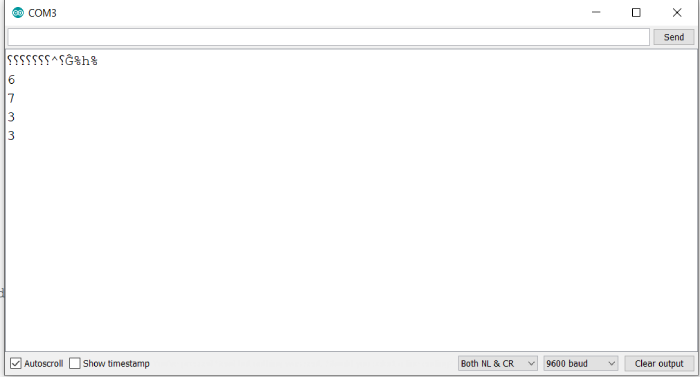在Arduino中設定/清除數字的特定位
當您深入研究高階韌體時,會處理許多暫存器,其特定位需要根據您的用例進行設定或清除。Arduino 有內建函式可以做到這一點。
語法
bitSet(x, index)
和,
bitClear(x, index)
其中 x 是需要設定/清除其位的數字,index 是位的位 置(0 表示最低有效位或最右邊的位)。此函式就地更改數字 x,並返回 x 的更新值。
請注意,設定一位表示將其值設定為 1,清除一位表示將其值設定為 0。
示例
以下示例說明了這些函式的使用:
void setup() {
// put your setup code here, to run once:
Serial.begin(9600);
Serial.println();
int x = 6;
Serial.println(x);
bitSet(x,0);
Serial.println(x);
bitClear(x,2);
Serial.println(x);
bitClear(x,3);
Serial.println(x);
}
void loop() {
// put your main code here, to run repeatedly:
}輸出
序列埠監視器輸出如下所示:

如您所見,我們從數字 6 (0b0110) 開始。
然後我們設定其第 0 位,得到 (0b0111),對應於 7。
然後,我們清除其第 2 位,得到 (0b0011),對應於 3。
然後我們清除其第 3 位,該位已經為 0。因此,我們再次得到 (0b0011),對應於 3。
序列埠監視器輸出按我們剛才描述的精確順序顯示這些數字。

廣告

 資料結構
資料結構 網路
網路 關係資料庫管理系統 (RDBMS)
關係資料庫管理系統 (RDBMS) 作業系統
作業系統 Java
Java iOS
iOS HTML
HTML CSS
CSS Android
Android Python
Python C語言程式設計
C語言程式設計 C++
C++ C#
C# MongoDB
MongoDB MySQL
MySQL Javascript
Javascript PHP
PHP